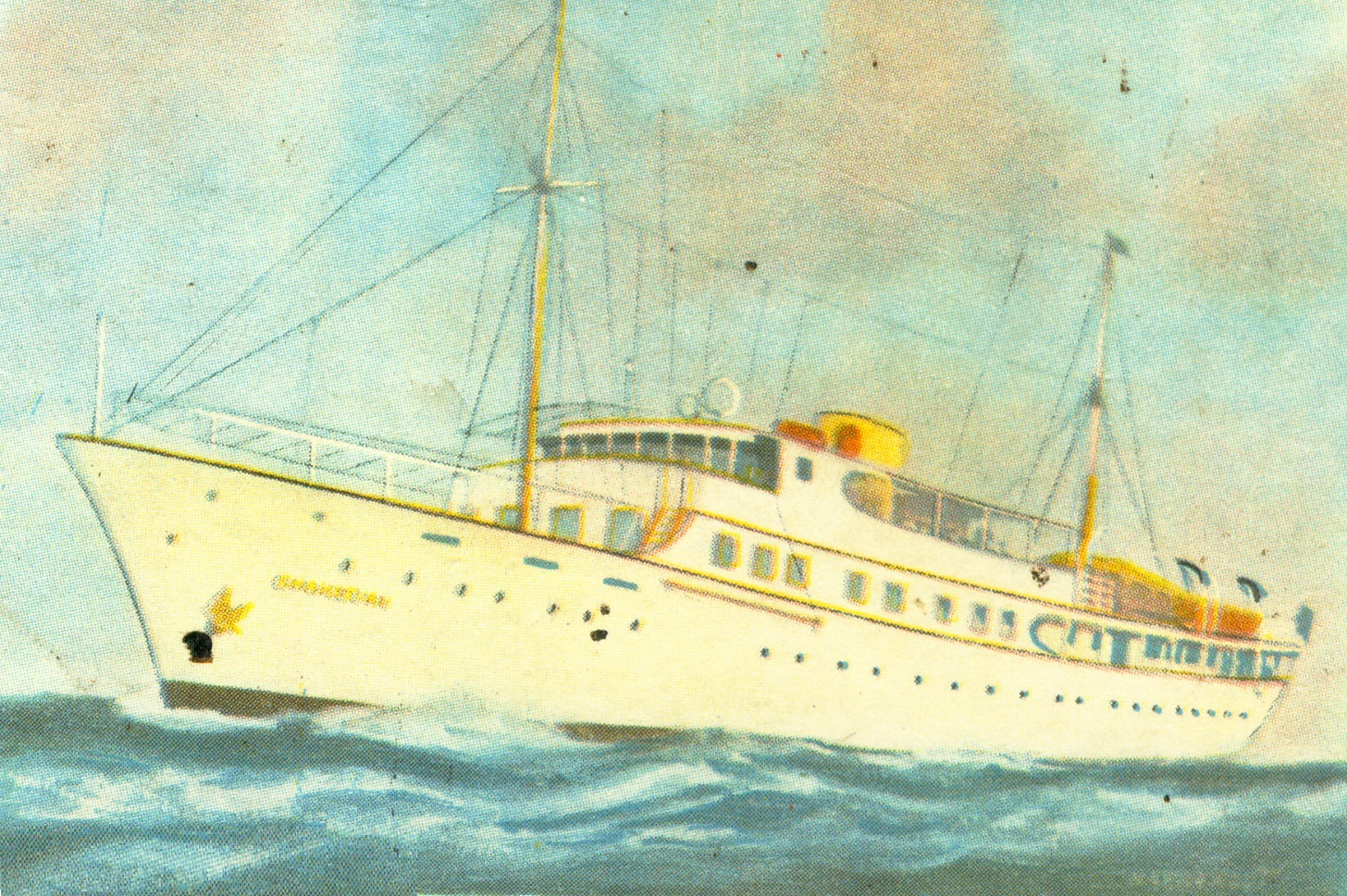Drawing made by G.J. Frans Naerebout and published in Op de Lange Deining
The Dutch newspaper De Sumatra Post dated 23 December 1935 published an item dated Amsterdam, Netherlands the22th reported that the Shah of Persia ordered the Ned. Maatschappij voor Havenwerken, Amsterdam, Netherlands to built a twin screw seagoing luxury yacht for his own account. She was designed by architect De Voogt of Haarlem, Netherlands and to be built by Boele’s Scheepswerven, Bolnes, Netherlands. The newspaper Het Vaderland dated 18 June 1936 reported the launching on the 17th. She was christened by the spouse of Ir. A.W.C. Stigter, board member of the Ned.Mij. voor Havenwerken. Among the public were two representatives of the Persian navy namely captain Zell and 1st lieutenant engineer Zad. The edition dated 5 July reported the official trial a day earlier and now delivered to Havenwerken. L. Smit en Co,’s Internatonale Sleepdienst was to tow her on short notice towards Leningrad, Russia. From there she would go via Russian inland waterways to the Caspian Sea.
The newspaper Bataviaasch Handelsblad dated 27 June 1936 reported that In September 1935 the Persian minister of Traffic asked Havenwerken to come with a tender. As architect was mentioned the Technisch Bureau voor Scheepsbouw H.W. de Voogt te Haarlem. The building at N.V. Boele’s Scheepswerven en Machinefabriek at Bolnes was ordered on 9 September, Machinefabriek Gebr. Stork en Co. N.V. at Hengelo, Netherlands was to deliver the engines and the Koninklijke Nederlandsche Meubelfabrieken H.P. Mutters en Zoon, The Hague, Netherlands was responsible for the furniture and inside decoration. Dimensions 54,30 x 7,80 x 3,20 x 5,02 (hold) metres. Gross register tonnage 531 tons. Steel-built with decks of teak. The 2 Stork single 2takt diesel engines were to supply 625 shp allowing a speed of 26,5 kilometres. The hull design was tested in the Scheepsbouwkundig proefstation at Wageningen, Netherlands. The sleeping accommodation included bathing facilities for the 12 sailors was in the fore ship followed by3-2 person cabins with living-dining room and bathroom for the nautical and civilian personnel and then 2 kitchens. In the aft ship was the accommodation for the shah and his guests.
Jane’s Fighting Ships for 1991-1992 reported a transport by floating dock through the Soviet canal system to Bandjar Anjali, Caspian Sea. Pennant number 155 Speed than 15 knots, a crew numbering 25 men, displacement 530 tons and as dimensions 53,7 x 7,7 x 3,2 metres or 176 x 25.3 x 10.3 feet. On the internet is a website dealing with the Iranian navy claiming that she is still in actual service serving in the Caspian Sea and armed with 4 anti ships missiles, 1-2cm guns and 2-0.50”/12,7mm machine guns. The Naval Institute Guide to Combat Fleets of the world 2002-2003 reports that she was decommissioned in 1998 and that her named was reused for another ship.

